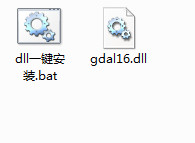- Green versionView
- Green versionView
- Green versionView
- Green versionView

Instructions for use
1. If you are prompted that xxx.dll is missing or cannot be found when running a certain software or compiling a program, you can copy the downloaded dll file to the specified directory (usually the system directory or the directory of the same level as the software), or re-add the file reference.
2. Unzip the file (usually a rar or zip archive). The folder name is X86 for 32-bit systems and x64 for 64-bit systems.
3. Select the file version according to the software situation. This step is more complicated. If it is a Windows dll file, the version number starting with 5.0 or containing nt is usually a Windows 2000 file.
Files with version numbers starting with 5.1 or containing xp, xpsp1, xpsp2, xpsp3 information are generally Windows XP files.
Files with version numbers starting with 6.0 or containing longhorn or vista information are generally WindowsVista files.
Files with version numbers starting with 6.1 or containing win7 information are generally Windows 7 files. If it is not a windows dll file, then
You need to flexibly check the version number, description, information provided by netizens, and the version number of the relevant dll to judge.
4. Copy the file directly to the system directory:
1. For Windows 95/98/Me system, copy the dll to the C:WindowsSystem directory.
2. For Windows NT/2000 system, copy the dll to the C:WINNTSystem32 directory.
3. For Windows XP/WIN7/Vista system, copy the dll to the C:WindowsSystem32 directory.
4. If your system is 64-bit, please copy the file to the C:WindowsSysWOW64 directory
5. Open "Start-Run-Enter the full name of the regsvr32 dll file" and press Enter to solve the problem.








































Useful
Useful
Useful